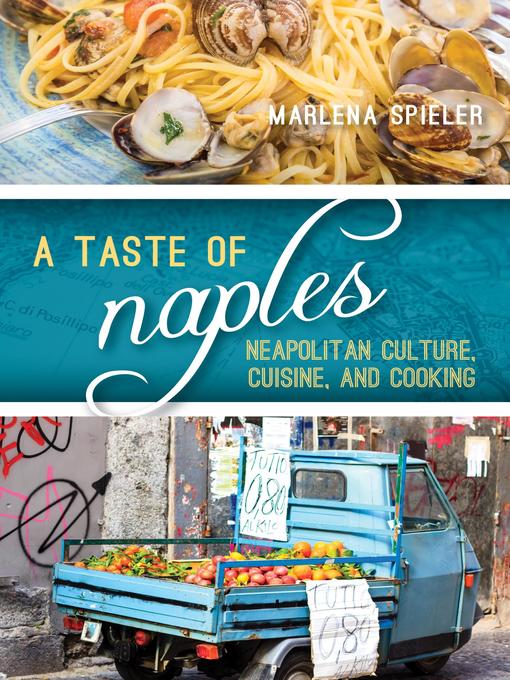
A Taste of Naples
Neapolitan Culture, Cuisine, and Cooking
کتاب های مرتبط
- اطلاعات
- نقد و بررسی
- دیدگاه کاربران
نقد و بررسی

October 8, 2018
Food writer Spieler (Feeding Friends) passionately extols the food and culinary traditions of Naples. With its looming volcano of Vesuvius, overcrowding, and history of organized crime, the gritty city of Naples is often ignored in favor of touristy Tuscany and Rome. Yet Naples gave the world pizza, marinara sauce, and zeppole, Spieler writes, and she begins with an early history of the city, from the Greeks in the seventh century BCE (who named the city Neapolis, or new city) to Italy’s unification in 1860 under Giuseppe Garibaldi (many of his soldiers from the north had never tasted pasta). Spieler includes chapters on pasta and pizza, festivals and celebrations, the fruit and vegetables that flourish in volcanic soil, and “how to eat like a Neapolitan.” The heart of the book, though, is the city’s deeply embedded food culture, which Spieler explains is deeply intertwined with the penny-frugal but taste-rich habits of the poor: there are pages on the abundant San Marzano plum tomato (“fragrant, fleshy... and bright skin that peels off easily”) and also plenty about pasta, such as linguine alle vongole, “one of the most iconic dishes.” Her enthusiasm and knowledge will likely inspire travelers to Italy to add a stop on their trip.

October 1, 2018
Though 25 or so recipes are scattered throughout Spieler's contribution to the Big City Food Biographies series, cooking is far from her sole focus. Instead, Spieler (who has 70 cookbooks to her credit) takes readers on a journey through Neapolitan towns and big cities, festivals and foodstuffs, history and tourist recommendations. The result is well written, informative, and full of Spieler's tales of self-discovery as well as her top-notch suggestions for enjoying Naples' pizzerias (the region is home to thousands) and restaurants. Spieler provides a good sense of Neapolitan cuisine's flavors?robust, not light and delicate?and its three-part tradition: cucina povera (as it sounds); monzu (the foods of the rich); and i cucini conventi (the Catholic perspective). Enlightening sidebars cover the area's canzoni (songs), its once-flourishing Jewish community, and Italy's Risorgimento (unification) that took place over the course of six decades. By far, though, Spieler's most entrancing book is all about Naples' food: traditions, iconic dishes and products, festivals, and more.(Reprinted with permission of Booklist, copyright 2018, American Library Association.)

























دیدگاه کاربران